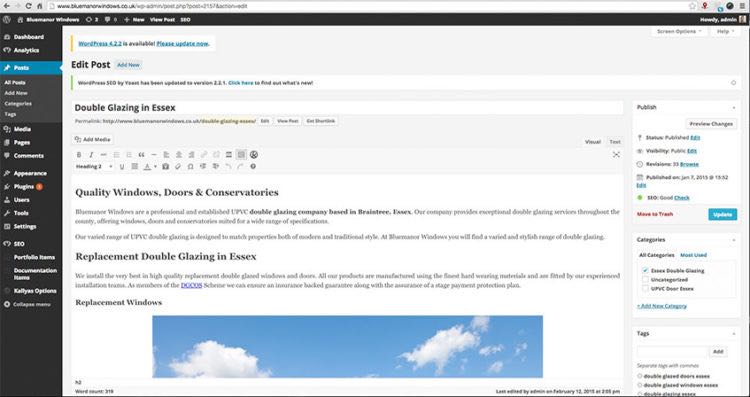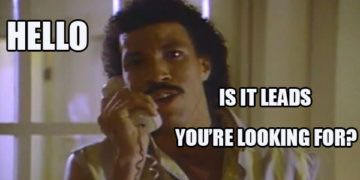SEO Tips
Another year, another Google algorithm change. Is your website prepared? Our resident SEO experts take a look at the best SEO practices and offer some SEO tips.
Optimizing For Yahoo, Bing And Other Search Engines
Did you know that Yahoo is now the default search engine for Firefox? This year, search engines such as Yahoo and Bing are likely to take a bigger piece of Google’s SEO pie. With Google’s deal with Safari coming to an end, Yahoo and Bing are now battling it out to become the next default search engine.

What can we take from this? It’s never a good idea to have all your eggs in one basket. This is so important when it comes to your business SEO.
Your target audience – are they likely to be Bing users or Google users? Optimising for Google is great but with other search engines now competing to become the default, optimising your site for multiple search engines is a smart and sensible move.
Content Is Still King: Stay Classy
With more focus now on content, there is less need for keyword saturation. Instead, the importance lies in the quality of your content and its relevance to your keywords.

Stop focusing on those keywords for a moment and try and see the larger picture. You want to think about generating content which uses relevant and appropriate keywords and synonyms.
Write the best content for your business and audience. You want expert content that is hard to replicate. Give something of value. Search engines are looking to rank the most authoritative content the highest and the best way to reach those page 1 rankings is to become an authority in your niche.
Think Conversations Not Keywords

Since Google’s Hummingbird update in 2013, semantic search has become a big deal and it’s not set to change.
Search engines now use context, meaning and intent of words in a search query. If your content strategy merely consists of matching up keywords then it’s time to get that SEO ball rolling.
For blog posts, think about long tail keywords (key phrases that contain multiple words). More ‘conversational’ keyword phrases are becoming important in SEO so your content should now be tailored towards engaging more with search engine users.

Once you have some compelling and descriptive content the next step is to look at the technical considerations. It’s a good idea to have some sort of checklist to ensure your content is well optimised.
Think about identifying and eliminating any duplicate content and making sure your links are relevant and helpful. If your ‘in-linking’ isn’t going to help your users or search engines around your site then send them to the scrap heap.
Marketing Your Content
Written a blog to be proud of? Applause all round. Have you marketed that content? A content and social media focused optimisation workflow will ensure your pages and blogs stand the best chance possible of being seen. And by the right people.

- Social Media: Optimise your content on all relevant social levels such as Facebook and Twitter but don’t over do it.
- Blog Comments: You want to encourage these. Make it known that you welcome comments.
Social Media Is Even More Important
Recent changes in search algorithms have made social signals even more important in 2015. Search engines have begun to rely on social signals to elevate results up the ranking ladder. It is expected that content with higher quality with more social shares, will rise higher in the ranks.

You should already know who your target audience is. The key is then discovering who influences them and then marketing your content directly to those influencers. This is known as ‘Influencer Marketing.’
What happens once you have created and shared your amazingly awesome content? You need to work on your user engagement and gain some links while you’re at it.
Your visual brand is just as important as your content strategy. All successful brands have a strong identity on social media platforms.
You need to think about differentiating your status from the hundreds of other updates that flood people’s social feed. Images, graphics and videos are more likely to get re-tweets, comments and likes so think about spicing it up.

Most importantly, you want to make sure you’re consistent in what you post. This way, people will begin to recognise your brand’s visual style.
Link Building is Now Focusing on Brand Mentions
Inbound SEO links are still the biggest influence for search engines. This is unlikely to change in the foreseeable future however, the strategy of link acquisition has changed.
Links now have to be high quality – no black hat SEO here. Earning a link from a high profile and relevant website will help with your SEO and referral traffic, leading ( we hope) to more sales and brand exposure. And where does this all start? It’s the ‘C’ word again folks: it starts with the creation of quality content that your users will want to share.
Earning Links Instead of Building Links
The days of building links on irrelevant blogs and sites are over. A single quality link which is earned via a credible website is far more rewarding for your SEO.

Why are high-quality links so valuable for your website? If you get it right then they will attract referral traffic, leads and sales as well as promote your brand.
If you haven’t analysed your link profile then it’s time to do so, it is critical to your overall SEO performance.
Is your website a spam sandwich? Time to tidy up those links.
The Rise of Mobile-Friendly SEO
Another important ranking factor in Google’s search algorithm is the mobile user experience. Mobile user experience will continue to grow, with more and more local searches using mobile devices.
If your website is still confined to a desktop viewing then it’s time to go mobile – you want to be found in those searches don’t you?

Something to keep in mind: Your content needs to be optimised differently for mobile search. Why? If you are browsing on your mobile, are you likely to read through long descriptions? A mobile user has a different attention span compared to a desktop user. The context is different – both users have different needs.
More Visual Based SEO
Content which has high-quality visual media will become a top performing asset. It’s no surprise that good content with lots of visual elements gets priority in the search engines. Time to get creative!

It’s All About ROI Metrics
Still putting emphasis on keyword rankings? Well, stop it. You should know better. If you are determining the success of the campaign based on keyword positions then it’s time to suck it up and set that alarm because you are due a MAJOR wake up call.
Oh, you rank on page 1 of Google? For a keyword that gets no traffic…

ROI should always be top of the list. Ask yourself this: Would you rather rank #7 for a keyword which generates a lot of revenue per month or, #1 for a keyword that generates little?
Yes, the majority of SEO focus has been on keyword rankings over the years and while keyword ranking is still an important piece of your organic traffic, it should not be the main focus.
Focus on conversion goals and generating that revenue.
Da Da Da Daaaa…Call To Action
Directing people to your site is one thing but keeping them on there is another – you want people to do something on your site. How can this be achieved? In your call-to-action.

Everything from the colour of your buttons to the language you use to describe that action – all encourages people to react.
You want to think about where you place it too, that user has to be able to easily locate that call-to-action.
Basically, all your on page elements should be consistent and support one another. It’s all about bringing your users one step closer to their objective.
Enjoyed Reading?
If you enjoyed reading our SEO tips then follow us on Twitter: @ICAAL_UK for our latest news and updates. Go on, give us a follow.

